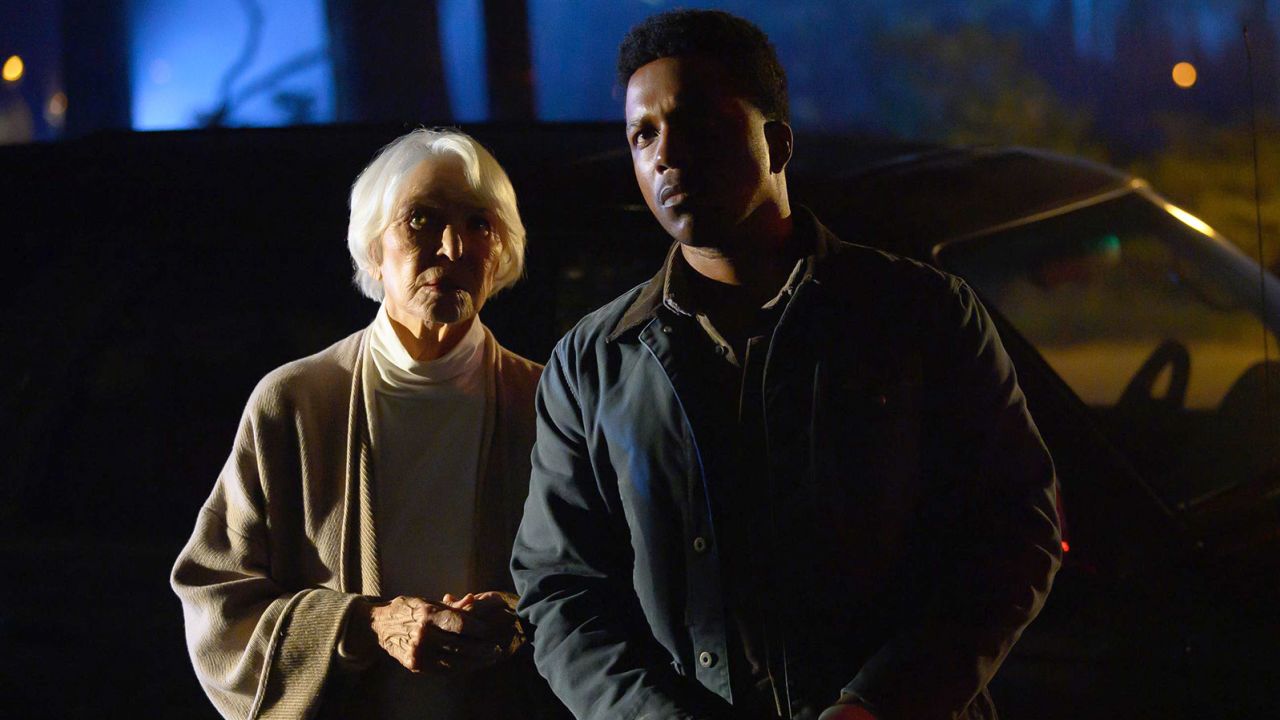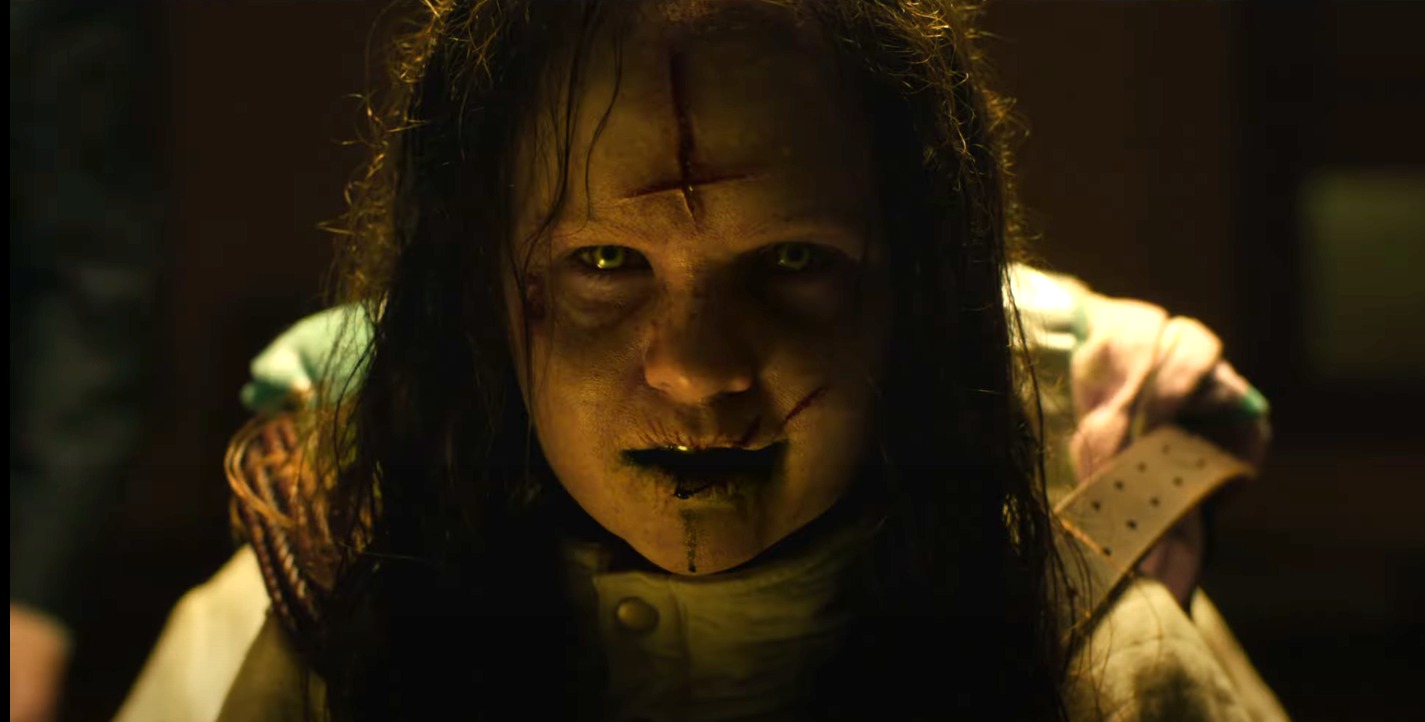In the year 1973, “The Exorcist” made its debut. Harry Francis, a veteran of 40 years in the business from the National Theatre of Business, remarked, “I’ve never seen a crowd like this before.” People were queuing even in the rain, and upon witnessing the rain-soaked queue, director William Friedkin ordered more than 3,000 cups of coffee. The film shattered records in Los Angeles and New York, attracting a crowd like none before. Some waited in line for a staggering seven hours to see the movie. While waiting, they played cards to pass the time. They were willing to endure anything to avoid missing such a wildly popular film. The lines were so long that even the police were called in to maintain order. Those in line eventually entered the theater and watched the film, while some couldn’t bear to finish it. There were those who couldn’t make it through the film even after three attempts. The National Theatre of West Wind claimed that at least 100 people fainted in every screening room. Ushers claimed to have two different methods to revive those who fainted. Those who didn’t faint rushed to the restroom to catch their breath. Cinema employees noted they had never seen so much vomit in their restrooms.
This is the precise narrative of the film we are discussing. “The Exorcist” was, without a doubt, the most significant coup in the history of horror cinema, one that would make Catholics and devout individuals jump out of their seats, faint, and even prevent them from completing the film due to sheer terror. “The Exorcist” is a masterpiece in the realm of horror cinema. However, what’s intriguing is that the film’s production company, Warner Bros., didn’t believe in its potential for success. In fact, due to the extended shooting schedule, they frequently visited the set, questioning the reasons for the delays. Nevertheless, William Friedkin’s film about exorcising demons overcame all on-set obstacles and so-called cursed events to take its place in theaters and become a legend. There may be no greater frenzy in the history of cinema. To sum it up in one word, “Madness” would be the most accurate descriptor.

Naturally, when a film of such colossal renown receives sequels, expectations run high. Unfortunately, the second and third films were far from the original, leaving behind the horror element and attempting to explore the culture of demonic possession and the beliefs behind it. They had drifted far from the core essence of the story. As a result, most audiences are unaware that “The Exorcist” is even a series.
In brief, let’s touch upon the plot… Katherine and Angela venture into the forest after school in an attempt to reach the spirit of Angela’s deceased mother. Whatever happened to them, the girls disappear for three days. When they return, they bring back something that doesn’t belong to them. Over time, this entity begins to consume them from within and take control of their bodies.
The fundamental reason for the success of “The Exorcist” was its status as the pioneering example of a simple battle between the devil and God. Up until that point, most horror films had traversed the realm of fiction, but “The Exorcist” brought the genuine fears of the faithful to the screen. Since ’73, cinema has witnessed many exorcism films, with notable entries like “The Conjuring” leaving a lasting impact. The trajectory of such films is quite predictable: an innocent character, typically a young girl, is possessed by a demon. As her body deteriorates over time, the narrative inevitably leads to an exorcism session. Amidst conflict, noise, and profanity, the demon is eventually expelled from the victim’s body. Unfortunately, “The Exorcist: Believer” fails to adhere to this fundamental narrative structure. While the film does have some intriguing elements that captured my attention, it ultimately falls short of delivering on the most essential aspect of the horror genre.
There are three noteworthy aspects of The Exorcist: Believer that caught my attention. Firstly, it effectively portrays the transformation of a non-believing father over time. Leslie Odom Jr.’s performance contributes significantly to conveying this transformation seamlessly. The film maintains a logical progression, especially up until Chris MacNeil’s involvement. Surprisingly, it steers clear of the clichéd dialogue often found in horror films, opting for a more realistic approach. However, once Chris MacNeil becomes entangled in the story, the film takes a sudden turn toward church propaganda. Up to that point, the film had realistic dialogues, but it inexplicably shifts into the realm of televised church commercials. There are a total of four church and religious tirades in the film, akin to theater sketches. Chris MacNeil’s monologue from her sickbed, embellished with stock footages, particularly earns the term “cringe” in every sense.
The second commendable aspect is the occasional dynamism in the film’s editing, even though it occasionally ventures into excess. Instead of a straightforward, fluid narrative, the film experiments with multiple cutaways to add depth to the scenes. While this approach works in some instances, it can be said that in certain places, the dynamic editing goes overboard.

The final and, in my opinion, the most noteworthy aspect of the film is Olivia O’Neill. While I found Lidya Jewett’s performance commendable, I can’t say the same for her portrayal of the demon. However, Olivia seems to have been born for this role, much like Linda Blair. She was one of the most captivating detail in the film. Especially considering that this was her debut film, the value of her performance is even more pronounced. I entered the film expecting to watch her with great pleasure. However, the main issue with the film lies precisely here.
As I mentioned earlier, the foundation of the film is the battle between the devil and God. The story should revolve around the two opposing poles. However, “The Exorcist: Believer” unfortunately attempts to center the film around the father. The camera constantly revolves around the father seeking solutions to save his daughter. Yet, as an audience member, I came to watch the increasingly tormented girls, their transformations, and the terror they unleashed. I wanted to see them, not their panicked parents. The camera being on the wrong side of the equation turns what should be a horror film into a mixture of suspense and drama. The horror elements in the film are so scarce that they managed to fit them all into the trailer. Aside from one or two extras, there’s nothing new in the film beyond what was shown in the trailer. This left me deeply disappointed as I had come to watch a “horror” film.
In summary, “The Exorcist: Believer” is a horror film that fails to deliver what it fundamentally should: the showdown between the demon and the priest. It reduces this essential element and fails to deliver the scares. The film initially explores the theme of disbelief well, but after Chris MacNeil’s involvement, it turns into a church ritual. The Exorcist: Believer unfortunately fails to properly utilize the indispensable exorcism aspect of such films, making it one of the least memorable examples in the genre. Even worse, the film’s focus on those around the possessed, rather than the demon itself, demonstrates a fundamental misunderstanding of its core essence. As someone who wanted to watch Olivia O’Neill from the moment I saw her in the trailer, I sadly didn’t get my fill of the character’s fantastic demon portrayal.

Cast & Crew
director: David Gordon Green
writers: Peter Sattler, David Gordon Green , Scott Teems, Danny McBride, William Peter Blatty
starring: Olivia O’Neill, Lidya Jewett, Ellen Burstyn, Jennifer Nettles, Leslie Odom Jr., Ann Dowd,
USA | 2023 | 111 MINUTES |
